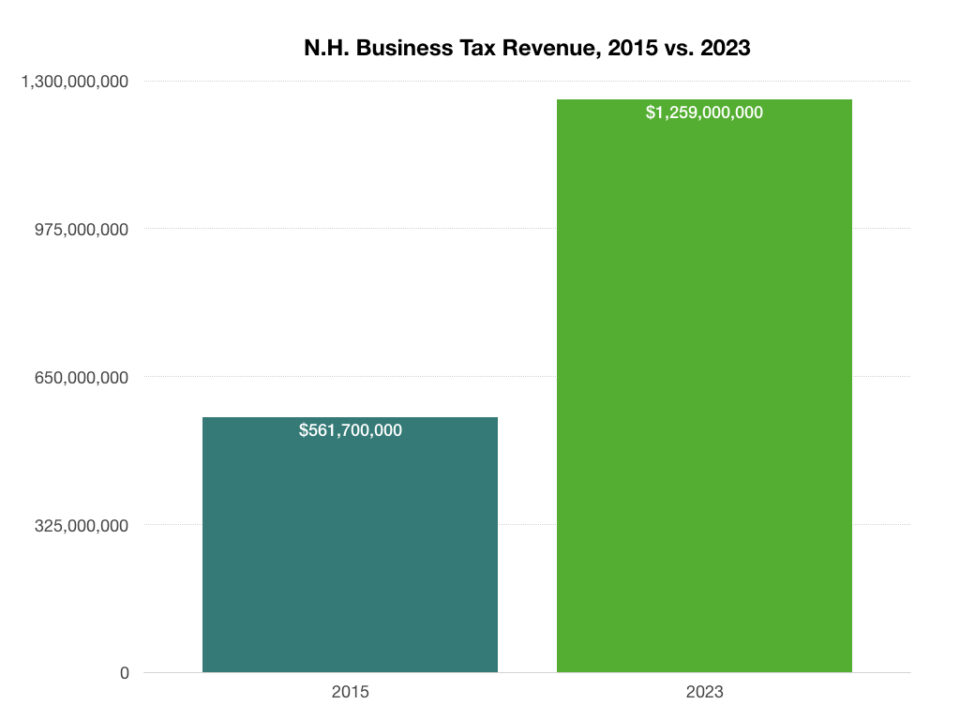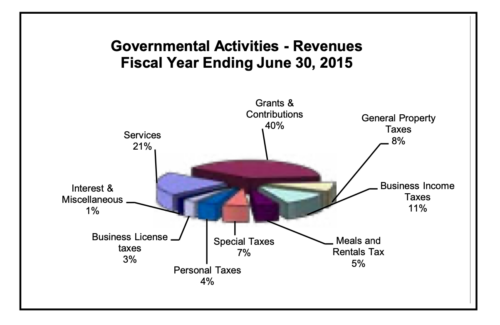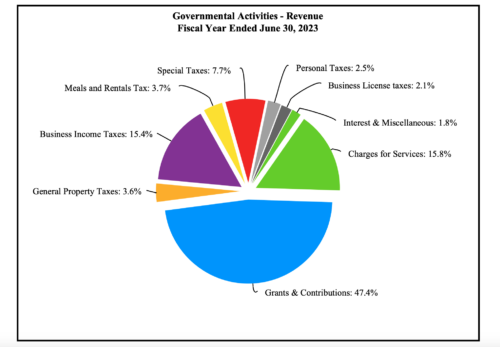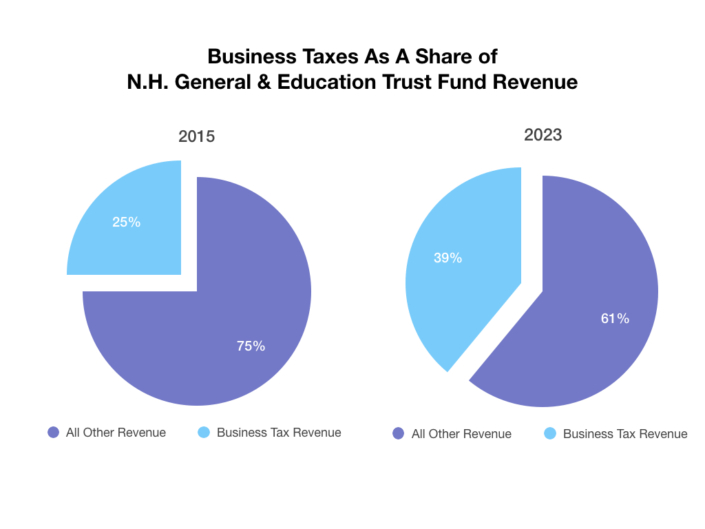Businesses not paying their fair share. Shrinking state revenues. A tax burden shifted from businesses to property tax payers.
Those were the predictions critics have made since 2015, when New Hampshire legislators began a series of business tax cuts.
Not only did those predictions fail to materialize, but the exact opposite happened.
Since the rate cuts began, business tax revenues for the state General and Education Trust Funds have more than doubled, from $561.7 million to $1.2 billion.

And the share of state government revenues paid by businesses has risen, while the share paid by property taxpayers has fallen by more than half.
Business shoulder larger share of state revenues
New Hampshire has two primary business taxes, the Business Profits Tax (BPT) and the Business Enterprise Tax (BET). Starting in 2015, legislators began to cut these tax rates.
From 2016-2022, legislators cut the BPT rate from 8.5% to 7.5%, and the BET rate from 0.75% to 0.55%.
In Fiscal Year 2015, the last year before these rate cuts took effect, business taxes accounted for 11% of total general government revenues, the state’s Comprehensive Annual Financial Report shows. (These exclude business activities such as liquor sales, lottery sales, toll revenue and unemployment insurance taxes.)

In Fiscal Year 2023 (the last year for which we have final, audited data), business taxes accounted for 15.4% of total general government revenue, a 40% increase, the state’s Comprehensive Annual Financial Report shows.

At the same time, the share of total general government revenues paid through general property taxes fell by more than 50%. General property taxes comprised 8% of general government revenues in FY 2015 and just 3.6% in FY 2023.
Those figures include federal funding. Restricting the analysis to state General and Education Trust Fund revenue alone, the increase is even more pronounced.
In 2015, business tax revenues accounted for 25% of General and Education Trust Fund revenue.
In 2023, they accounted for 39%, a 56% increase over 2015.

In fact, business tax revenues alone in 2023 ($1.26 billion) were larger than the entire Education Trust Fund in 2015 ($895 million) and nearly as large as the entire 2015 General Fund budget ($1.3 billion).
Opponents of the business tax cuts continue to claim that they resulted in businesses not paying “their fair share.”
In fact, businesses’ share of General and Education Trust Fund revenues rose by 56%, and their share of total general government revenues rose by 40%. Any way you do the numbers, businesses now pay a much larger share of state revenues than before the tax cuts began.
Smaller tax changes
Some smaller tax changes were made during these years, but they are too small to account for this shift in state budget burden from property taxpayers to businesses.
For example, legislators eliminated the Electricity Consumption Tax in 2017, effective in 2019, and trimmed the Rooms & Meals Tax by half a percentage point in 2019. Legislators also began to phase out the Interest & Dividends tax by reducing the rate from 5% to 4% in 2023, then to 3% in 2024, and to zero in 2025.
The Electricity Consumption Tax collected roughly $6 million a year before it was eliminated. And Rooms & Meals Tax revenue did not decline, but increased from $341.6 million in FY 2018 to $464.3 million in FY 2024, according to the Department of Revenue Administration 2024 Annual Report. Though Rooms & Meals Tax revenue rose by more than $100 million, its share of state revenues fell from 5% to 3.7% from 2015 to 2024.
Interest & Dividend Tax revenue fell slightly, from $156.4 million in FY 2022 to $150.6 million in FY 2023, before spiking to $184 million in FY 2024.
These comparatively small changes cannot explain the shift in tax burden toward businesses.
Increasing business activity
The increasing share of state revenues paid by businesses is primarily the result of a booming economy and rising business profits.
The number of businesses in good standing registered with the state increased from 160,000 in 2015 to 188,000 in 2022, the last year for which the Department of Revenue Administration has posted complete data (a 17.5% increase).
The number of businesses filing a return rose by 3,174, or 4.4%, while the number making a business tax payment rose by 5,401, or 12.4%.
These figures indicate that New Hampshire’s growing economy generated increased business formation and business activity. In other words, more businesses made more money, which generated more state revenue.
In short, businesses now pay a significantly larger share of state revenues, while a lower share comes from property tax payers–exactly the result progressives said they wanted to achieve by raising business taxes.
